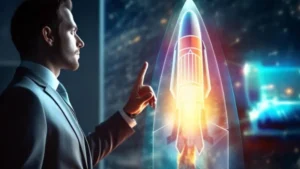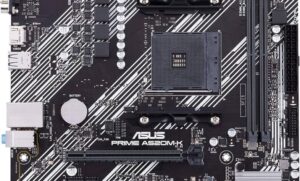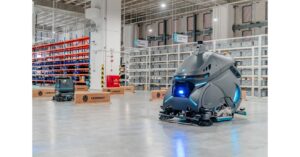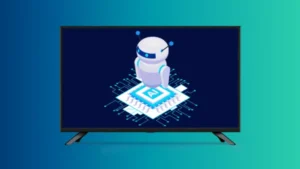Introduction: The Emergence of AI Art and Digital Expression
Artificial intelligence (AI) has significantly expanded the boundaries of digital expression in recent years. With AI-driven technologies, artists are exploring new frontiers in creativity, pushing past the traditional limitations of human imagination. One of the most intriguing developments is the rise of pregnant male AI art. This avant-garde trend challenges societal norms and reshapes how we perceive gender, identity, and the body.
As AI continues to evolve, its influence on digital art is undeniable. Algorithms and neural networks, which mimic human cognitive processes, are now creating thought-provoking works that leave audiences questioning the future of art and the nature of reality. Among the boldest examples of this innovation is the emergence of pregnant male imagery, which defies conventional ideas of gender and provokes critical discourse on identity and representation in the digital age.
What Is Pregnant Male AI Art?
Pregnant male AI art is a genre of digital expression where artificial intelligence generates images depicting male bodies as pregnant. At its core, this art form blends surrealism with a critical commentary on gender norms, challenging the rigid boundaries of biology and identity. These images often portray men with traditionally feminine features, subverting societal expectations about gender roles.
Historically, art has played a critical role in deconstructing and reconstructing the visual language of gender. Pregnant male AI art takes this to a new level by employing machine learning algorithms to create unexpected and sometimes shocking representations of masculinity. By blending male anatomy with traditionally feminine aspects like pregnancy, AI artists invite viewers to reconsider long-held beliefs about gender and body autonomy.
The Role of Artificial Intelligence in Artistic Innovation
The rise of AI-generated art represents a major shift in how we view creativity. AI systems, particularly those based on neural networks, can “learn” from vast datasets of human-created artwork. By analyzing thousands of images, styles, and forms, these algorithms produce novel pieces that can range from hyperrealistic to abstract. In the case of pregnant male art, AI draws from diverse cultural references and reimagines male bodies in ways that human artists might not have considered.
What makes AI particularly powerful in this realm is its ability to bypass traditional constraints of human logic. It isn’t bound by the same cultural or societal preconceptions about gender, allowing it to create artwork that is entirely original and at times, challenging to comprehend.
Cultural Relevance of Pregnant Male Imagery
In a world where discussions around gender fluidity and non-binary identities have become mainstream, pregnant male art feels especially timely. Society is increasingly recognizing that gender is not a fixed binary but a fluid spectrum. AI art, particularly pregnant male imagery, reflects this evolving understanding by disrupting the traditional male-female dichotomy.
This genre taps into the current zeitgeist, questioning what it means to be male or female, and whether these categories are even necessary for defining a person’s identity. Pregnant male art becomes more than just an artistic statement; it becomes a cultural conversation about the fluidity of gender and the breaking down of restrictive societal norms.
The Evolution of Gender Representation in Art
Art has long been a medium for exploring gender and sexuality. From ancient statues depicting androgynous figures to Renaissance works that idealized the female form, artists have always played with the concept of gender. In more modern times, gender representation in art has become more overtly political, with movements like feminism and LGBTQ+ rights influencing artistic expression.
Pregnant male AI art, however, takes this conversation to a new level by literally reconfiguring the human body. It challenges not just societal norms but biological ones, prompting viewers to question whether such a boundary as “male” or “female” even matters in the digital age.
Why Pregnant Male Art Stands Out in the Digital Age
The power of pregnant male art lies in its ability to shock and provoke. In an era where so much content is consumed online, digital artists are constantly seeking ways to stand out. AI-generated pregnant male images do this by presenting the human body in an unfamiliar, almost alien form, making audiences pause and reflect.
This form of digital art uses surrealism as a tool, blending the familiar with the fantastical to evoke emotional responses. The pregnant male body, which appears natural yet profoundly unnatural at the same time, invites the viewer to question their assumptions about masculinity and reproduction.
The Role of AI in Redefining Body and Identity
At its core, AI art is about reimagining the possibilities of the human form. Pregnant male AI art exemplifies this by taking one of the most distinctly feminine biological processes—pregnancy—and attributing it to male bodies. It raises questions about identity and embodiment in a world where gender norms are increasingly seen as fluid and constructed rather than innate.
By breaking these boundaries, AI art opens up new discussions about who we are and how we see ourselves. It allows us to imagine bodies beyond their traditional limitations, where identities are malleable and self-defined rather than dictated by biology.
Artists and AI Collaborations
Many contemporary artists are now collaborating with AI to explore these challenging themes. By feeding AI programs specific datasets or setting certain parameters, artists can guide the algorithms in creating artwork that addresses topics like gender fluidity. Artists such as Mario Klingemann, who is known for his AI-generated portraits, push the boundaries of what machines can do creatively.
These collaborations highlight how AI can be a tool, not a replacement, for human creativity. The combination of human intention and machine execution results in art that reflects both the artist’s vision and the algorithm’s unique ability to create the unexpected.
Pregnancy as a Symbol in Art: A New Interpretation
Pregnancy has always been a powerful symbol in art, representing creation, life, and fertility. In pregnant male AI art, this symbol is recontextualized to challenge traditional ideas of reproduction and masculinity. By depicting men as pregnant, the art offers a surreal take on the idea of creation, suggesting that anyone can be a creator, regardless of gender.
How Audiences Respond to Pregnant Male Art
Reactions to pregnant male art vary widely. Some viewers find it deeply moving, as it opens up new possibilities for what gender and identity can mean. Others may find it disturbing or provocative, as it challenges deeply ingrained beliefs about the body and reproduction. This diversity of reactions is a testament to the power of art to provoke thought and dialogue.
AI and the Challenge of Ethics in Artistic Creation
As AI-generated art becomes more widespread, it raises important ethical questions. Who is the true creator—the artist or the algorithm? And is it ethical to use AI to depict sensitive subjects like gender and identity, especially when those depictions might be controversial or misunderstood?
The Role of AI in Breaking the Boundaries of Human Anatomy
AI’s ability to bend and break the rules of human anatomy allows artists to explore new forms of expression. Pregnant male AI art pushes these boundaries further, imagining bodies that defy the biological norms of reproduction.
Digital Platforms and the Rise of Pregnant Male AI Art
Digital platforms like Instagram and NFT marketplaces have played a huge role in the rise of pregnant male AI art. These platforms allow artists to share their work with a global audience, challenging traditional gatekeepers of the art world and democratizing access to revolutionary art forms.
The Impact of Pregnant Male AI Art on Traditional Artists
While some traditional artists may view AI art as a threat, others see it as a tool to enhance their own creative processes. Pregnant male art, in particular, forces traditional artists to reconsider their own work’s relationship to gender and identity.
The Future of AI Art and the Evolution of Digital Expression
As AI continues to evolve, so too will its role in digital expression. Pregnant male AI art is just one example of how AI is pushing the boundaries of what art can be. In the future, we can expect to see even more innovative and challenging works that question our understanding of gender, identity, and the human body.
Conclusion: The Revolutionary Power of Pregnant Male AI Art
Pregnant male AI art is more than just a digital experiment—it is a revolutionary form of expression that challenges our most basic assumptions about gender, the body, and identity. As AI continues to influence the art world, its ability to generate provocative, boundary-pushing work like this will only grow. While controversial to some, pregnant male AI art represents a bold new frontier in the ongoing conversation about what it means to be human in the digital age.







Be First to Comment